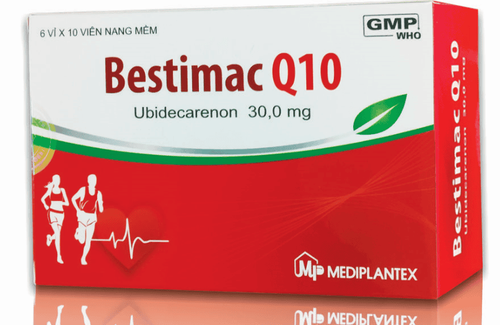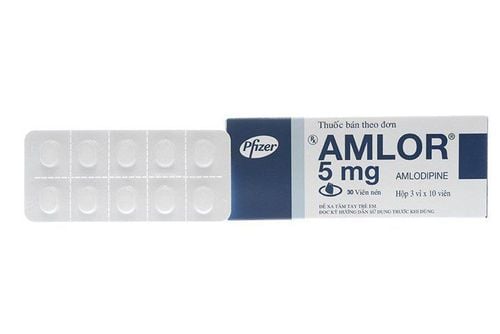This is an automatically translated article.
Captagim is used to treat high blood pressure, congestive heart failure, and infarction in patients with left ventricular dysfunction and insulin-dependent diabetic kidney disease with proteinuria. Complying with indications and doses of Captagim will help patients improve treatment efficiency and ensure safety for health.1. What does Captagim do?
Captagim belongs to the group of cardiovascular drugs, is made in the form of tablets, packing specifications: Box of 10 blisters x 10 tablets. The ingredient Captopril 25mg in Captagim is an inhibitor of the enzyme that converts angiotensin I to angiotensin II, causing vasoconstriction and stimulating the secretion of aldosterone in the adrenal cortex.
2. Indications to use Captagim
Captagim is indicated in the following medical conditions:
High blood pressure; Congestive heart failure ; Post-infarction period in patients with left ventricular dysfunction but no signs of heart failure; Insulin-dependent diabetic nephropathy with proteinuria.
3. Contraindications to the use of Captagim
Do not use Captagim to treat the following conditions:
Patients are sensitive to Captopril or other ingredients in Captagim; History of angioedema, myocardial infarction; Renal artery stenosis ; Aortic or mitral valve stenosis, severe obstructive cardiomyopathy; Pregnant and/or lactating women.
4. Dosage, how to use Captagim
How to take Captagim:
Captagim is taken orally. Dosage of Captagim:
Treatment of hypertension, starting at a dose of 25mg x 2-3 times/day. In severe cases, the dose of Captagim can be increased to 50mg x 3 times/day; Treatment of congestive heart failure should be accompanied by diuretics: Captagim dose should not exceed 150mg/day.
5. Notes when using Captagim
Captagim should be used with caution in the following subjects:
People with impaired kidney function or on hemodialysis; Patients who are dehydrated or on treatment with potent diuretics are at risk of severe hypotension; Captagim increases serum potassium. Therefore, caution should be exercised when used in combination with potassium-sparing diuretics, potassium-containing salts and frequent monitoring of electrolyte balance; Captagim may affect the ability to drive and use machines. Therefore, if you feel dizzy while taking the drug, do not drive or operate machinery.
6. Captagim side effects
Common side effects:
Dizziness; skin rash, itching; A cough. Uncommon side effects:
Severe hypotension; Change in taste; Stomatitis; Gastritis; Stomachache . Rare side effects:
Hypersensitivity, urticaria; Muscle pain, fever; Eosinophilia, lymphadenopathy, weight loss; Vasculitis; Male breast enlargement; Angioedema , sensitivity to light; pemphigus rash; Erythema multiforme ; Stevens-Johnson syndrome; Exfoliative dermatitis; Jaundice, pancreatitis; Bronchospasm ; Asthma worsens; Muscle, bone and joint pain; Paresthesias; Depression; Proteinuria , nephrotic syndrome; Hyperkalemia; Decreased kidney function. During the course of treatment, if there are any abnormal symptoms suspected of using Captagim, the patient should notify the doctor immediately for timely treatment.
7. Interactions with other drugs
Possible interactions when using Captagim concurrently with the following drugs:
Furosemide Non-steroidal anti-inflammatory agents; sympathomimetic agent; Lithium; Potassium-sparing diuretics. Above is information about uses, dosage and precautions when using Captagim. To ensure safety for health and maximize the effectiveness of treatment, patients need to take Captagim exactly as directed by their doctor.
Please dial HOTLINE for more information or register for an appointment HERE. Download MyVinmec app to make appointments faster and to manage your bookings easily.













